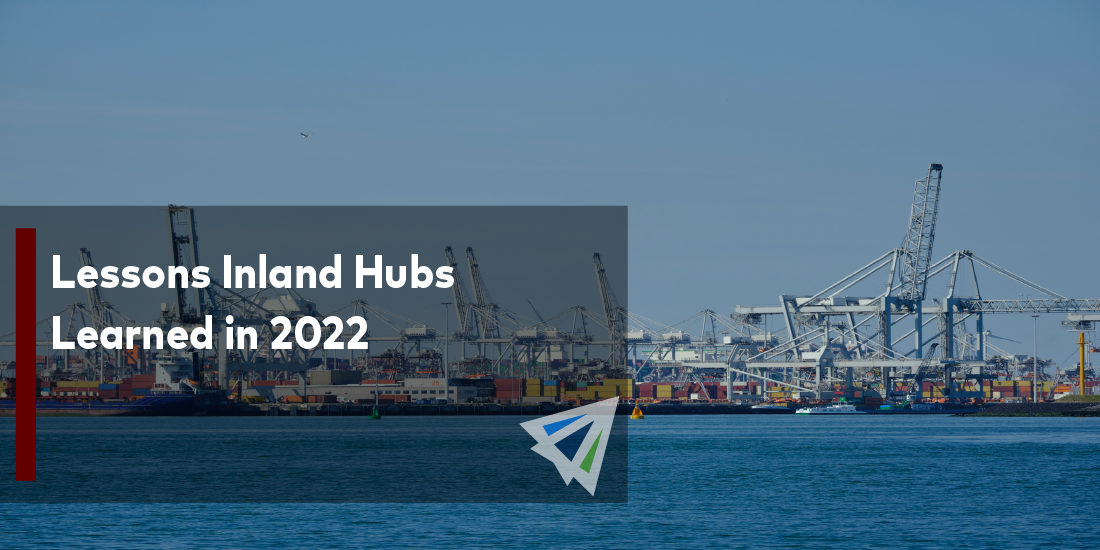Rail hub performance last year was sub-par. Things have gotten better recently due to a decline in import activity to the U.S., but rail hubs and inland ports across the U.S. are using last years struggles as an opportunity to learn a lesson and apply those insights to the new year.
Spillover Lots Are Revisiting Processes for Import Container Handling
The process for container imports and pickup near rail ports was a bit hap-hazardous last year. Essentially, rail ports were overly congested, so additional containers were sent to spillover lots. These ports were originally intended for holding and exporting empty containers, but were not being put to use on the import side, which caused significant disorganization and inefficiency. Trucks would show up at random times, and most cargo moved on a “last in, first out” basis, as deconstructing towers of containers to retrieve first arrivals was near impossible without adequate equipment.
The reason for this struggle is simple. When looking at exports of empty containers, organization and FIFO methods don’t apply. It doesn’t matter what container leaves – they just need to get an empty container off the ground and shipped away. However, imports require detailed planning and a retrieval process that can allow containers to move through the lot in the order they arrived. This relies on specific organizational practices, as well as loads of equipment to help efficiently deconstruct, move, and reconstruct container stacks.
In preparation for potential import activity and consumer demand surges, these spillover lots are planning to add the equipment necessary to operate both as either an export-based or import-based lot depending on what the market looks like during each season.
In addition to concerns over the ability to simply organizing and move containers correctly, another major area of focus is speed. With exporting empty containers, speed doesn’t matter too much. Depots usually store excess boxes and ship them as needed. However, import activity needs to happen quickly, and this requires an overhaul of groundskeeping practices.
Data Usage to Improve Container Efficiency
The primary way in which these processes will evolve to accommodate current market needs will fall on the usage of key data. While data on drop offs and pickups for empties wasn’t important, it’s top priority when operating a lot of handling imports.
These spillover lots will utilize data based on which containers need to be picked up in order to organize their lots and container stacks so that retrievals are as efficient as possible. It’s impossible to properly organize container stacks if you don’t have data on who’s picking up the containers and when. This way, when drivers arrive for pickup, they’re not wasting hours waiting for port workers to deconstruct a stack of eight containers. The boxes will simply be ready for pickup to keep congestion low.
Not only will this usage and organization of data result in quicker pickup times – it actually results in a net increase in capacity, as the restoration to efficiency opens up the potential to handle more containers on a day-to-day basis. Restoring efficiency on the inland-side of transportation is crucial, as there is always a ripple-effect both forward and backward through the supply chain. Efficient operations on spillover lots and rail hubs will result in a more efficient supply chain on both the domestic trucking side, as well as the international ocean port side.
Need for Cranes
One major piece of equipment that these lots are focused on acquiring are cranes that can help with the quick construction and deconstruction of container stacks. Introducing these to spillover lots is a surefire way to improve efficiency and make the lots more adaptable to market demands. The exact timeline on these improvements is currently unknown, but given the struggles encountered last year, it is a top priority for all on the inland side of container handling.
